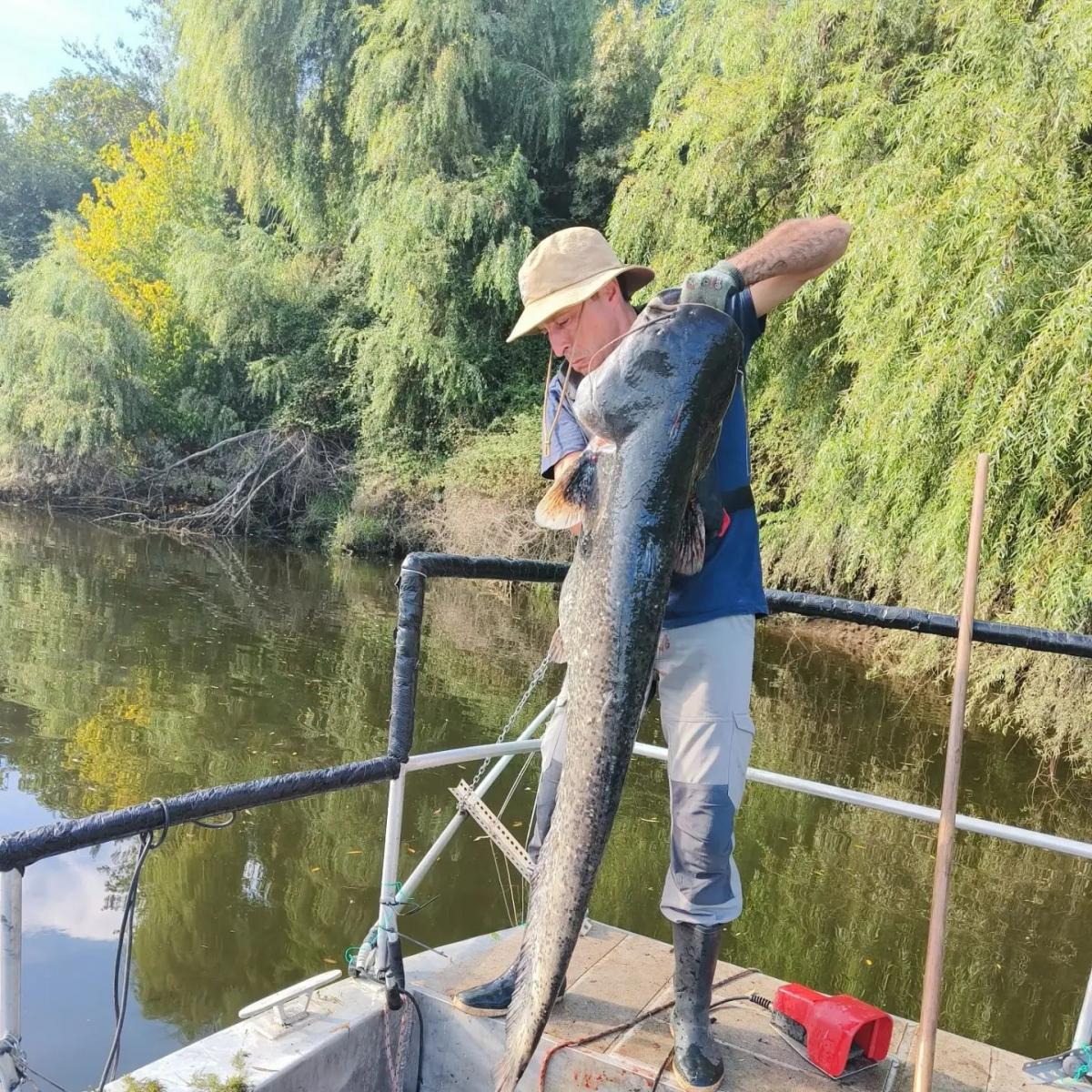MARE researchers warn of the consequences of Invasive Species in the Tagus River
In an interview with the media, MARE researchers Filipe Ribeiro and Rui Rivaes warn of the growing presence of many exotic species in the river, such as the invasive species of siluros, which affect native fish and the riverine ecosystem.
The team of researchers focuses its work on the problems and challenges facing society, in close partnership with national and international research centres. In this case, the researchers are trying to understand the impact of invasive species such as the Siluro on native species such as the European eel, the shad or the barbel. To this end, since 2016 it has established 12 sampling points between the Fratel Reservoir and Salvaterra de Magos, for annual monitoring purposes.’
We do scientific sampling with electrofishing and with a net, which is a seine net, so that we have a global view of what we have in our river,’ Filipe Ribeiro explained to Hertz radio.
Researcher Rui Rivaes also emphasised to Lusa the importance of ‘regular and continuous ecological monitoring’ of rivers, ‘so that studies can be carried out that address temporal developments’ and plans can be established to ‘act accordingly’ with the results. According to the MARE researcher, the Tagus river ‘is being invaded by many exotic species, and what we have been seeing is that, from the 1980s until now, there has been a very large variation in the proportion of native species and exotic species, with the presence of invaders increasing from 10 per cent to 50 per cent’.

To better understand how an invasive species can alter the functioning of the ecosystem, Rui Rivaes gives an example: ‘If we have species that are more benthic, that feed on the bottom, and we only have predators, we'll have, for example, other exotic species, like the sapwood, that feed in the water column, which means we'll have less zooplankton, less phytoplankton, which also reduces the quality of the water, with a cascade of effects that hasn't been well studied.’
One of these invasive species is the Siluro, which can reach 2.8 metres in length and weigh 120kg, and which feeds on native species such as lamprey and eel, whose populations are declining significantly. MARE researcher Filipe Ribeiro says that ‘it's still too early’ to draw conclusions, although he admits that there is indeed a record of a decline based on other work already carried out.
Rui Rivaes concludes by saying that without wishing to be alarmist, ‘when we look at the Tagus and the overall picture of 40 years of monitoring, we see that there really has been a marked deterioration in the ecological quality of the river and that this corroborates what we are seeing in terms of the size of the populations’.
To access the Hertz radio interview click HERE
To access the interview with Lusa click HERE
